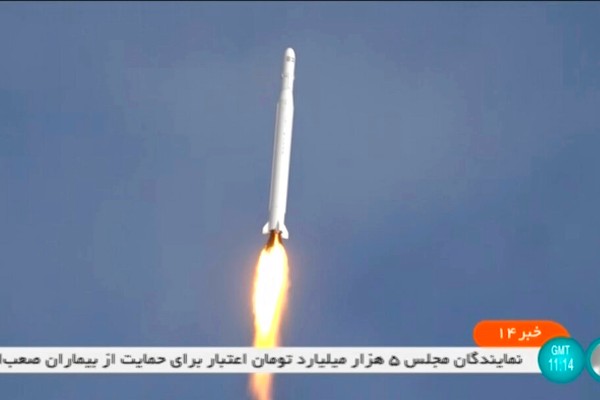It’s not clear when the launch took place, but announcement comes as Iran’s nuclear negotiators return to Tehran for consultations.
By Associated Press
Iran’s paramilitary Revolutionary Guard launched a second reconnaissance satellite into space, state media reported Tuesday, just as world powers awaited Tehran’s decision in negotiations over the country’s tattered nuclear deal.
State television identified the launch as taking place in its northeastern Shahroud Desert, without specifying when. However, it came as Iran’s top diplomat at the months-long talks suddenly flew home late Monday for consultations, a sign of the growing pressure on Tehran as the negotiations appear to be nearing their end.
The Guard said the Noor-2 satellite reached a low orbit of 500 kilometers (310 miles) above the Earth’s surface on the Qased satellite carrier, the state-run IRNA news agency reported. It described the Qased, or “Messenger” in Farsi, as a three-phase, mixed fuel satellite carrier.
“It is a great achievement that we can put our eyes in the sky again and look at the Earth from space,” said Guard Gen. Hossein Salami, according to IRNA.
Footage aired on state television showed the rocket taking off from a truck-based launcher on a concrete pad in the desert. Features of the site shown in the footage, analyzed by The Associated Press and compared to regional satellite photos, correspond to a launch site nearly 40 kilometers (25 miles) southeast of the city of Shahroud in Iran’s rural Semnan province.
Authorities already had begun receiving signals from the satellite as it circles the Earth every 90 minutes, IRNA quoted Iranian Information and Communications Technology Minister Isa Zarepour as saying.
U.S. officials did not immediately respond to a request for comment and an American-maintained catalogue of space objects did not note a new Iranian launch this month. The launch comes days after satellite pictures suggested Iran’s civilian program suffered another failed launch.
Noor means “light” in Farsi. The Guard launched its first Noor satellite in 2020, revealing to the world it ran its own space program.
The head of the U.S. Space Command later dismissed that satellite as “a tumbling webcam in space” that wouldn’t provide Iran vital intelligence — though it showed Tehran’s ability to successfully get into orbit after a series of setbacks.
The U.S. has alleged Iran’s satellite launches defy a U.N. Security Council resolution and has called on Tehran to undertake no activity related to ballistic missiles capable of delivering nuclear weapons. The U.S. intelligence community’s 2022 threat assessment, published Tuesday, claimed such a satellite launch vehicle “shortens the timeline” to an intercontinental ballistic missile for Iran as it uses “similar technologies.”
Iran, which long has said it does not seek nuclear weapons, previously maintained that its satellite launches and rocket tests do not have a military component. U.S. intelligence agencies and the International Atomic Energy Agency say Iran abandoned an organized military nuclear program in 2003.
“We continue to assess that Iran is not currently undertaking the key nuclear weapons-development activities that we judge would be necessary to produce a nuclear device,” the 2022 U.S. intelligence threat assessment said.
In February, Iran unveiled its ‘Khaiber-Sheikan’ missile. With a range of 1,450 km (900 miles), it can reach Israel, Turkey and even parts of Russia and Ukraine.
United With Israel staff contributed to this report.
